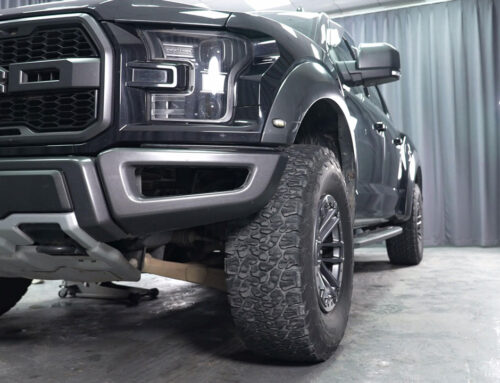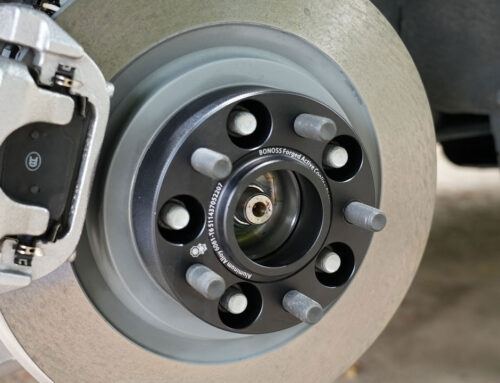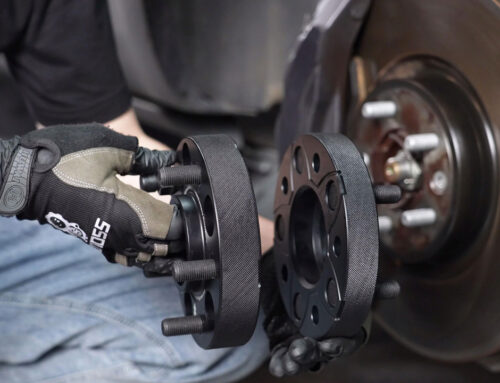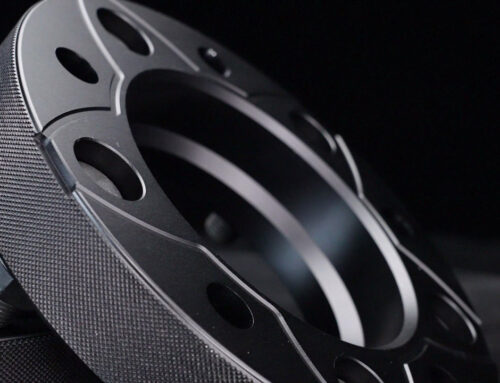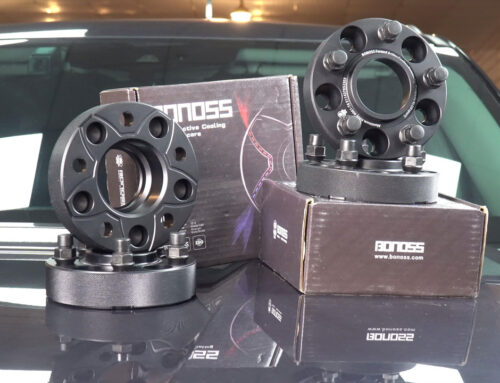What makes a good wheel spacers is not only related to the wheel spacers fitting, but can also be concluded from two other possible reasons for the failure of wheel spacers, the first being the failure of wheel spacers to center properly on the hub centric and the second being the poor quality of inexpensive wheel spacers causing breakage. In our first article, the failure of wheel spacers to properly center the hub centric of the wheel was also listed as the first reason, so let’s analyze these reasons for failure to find out what makes good wheel spacers.
Why Hub Centric Wheel Spacers Are Important?
Hub centric wheel spacers need to be aligned with the hub assembly during installation, but some wheel spacers do not come with a hub centric, which means that the wheel spacers are only placed on the hub assembly during installation and cannot be fixed and centered by the hub centric. Most cars usually use a hub centric design as the wheels remain concentric with the bearings as the vehicle travels and are better able to support the vehicle against road bumps, whereas a lug centric design shifts the point of stress to the lugs and the lack of hub centric support may result in road bumps deforming the lugs, where the lug deformation creates a small gap that eventually makes the hub and hub assembly are no longer concentric, resulting in a violent shudder at high speeds.
This phenomenon is similar to the lack of hub centric in wheel spacers. Some non-hub-centric wheel spacers rely solely on the lugs for clamping, and over a long period of time, the gap caused by the lug wear causes the wheel spacers to no longer fit the hub assembly and causes severe shaking at high speeds. Worse still, the eccentric operation caused the wheel spacers to collide violently with the hub assembly over a long period of time, which could have damaged the hub assembly and caused the wheel spacers to fall off from the hub assembly.
The reason why good wheel spacers should have a hub centric design is that the hub-centric wheel spacers create a connection between the rim and the hub assembly, restoring the load transfer between the bearing and the rim. This small design also helps to eliminate the possibility of wheel spacers vibrating at high speeds.
.jpg)
Choose Best Material Wheel Spacers
The cracking of wheel spacers due to quality is also a concern for vehicle owners, and because the market is flooded with various wheel spacers, the fancy advertising slogans make vehicle owners ignore the core material of wheel spacers, and after buying and using wheel spacers, even the normal driving of the vehicle causes wheel spacers to break, and eventually, no vehicle owner dares to use wheel spacers again. These inferior wheel spacers may be made of low-strength iron or pure steel, and their processing may be cast. As the leading brands of wheel spacers, BONOSS, H&R, and Eibach have all agreed on the choice of materials and the main wheel spacers materials are aluminium alloy 6061, 6061-T6, and 7075-T6. These three materials are the most common raw materials for wheel spacers for the following reasons.
Wheel Spacers Material
| 6061 | 6061-T6 | 7075-T6 | |
|---|---|---|---|
| Ultimate Tensile Strength | 18000 psi (125 Mpa) | 42000-45000 psi (300-310 Mpa) | 74000-78000 psi (510-572 Mpa) |
| Tensile Yield Strength | 8000 psi (55 Mpa) | 35000-40000 psi (241-275 Mpa) | 63000-69000 psi (434-503 Mpa) |
| Fatigue Strength | 8800 psi (61 Mpa) | 14000 psi (96 Mpa) | 23000 psi (160 Mpa) |
| Hardness (Brinell) | 33 | 93 | 150 |
6061 Aluminium Alloy
6061 Aluminium is an alloy that was developed in 1935, it was called “Alloy 61s” at that time. Today, it is usually referred to as “structural aluminium.” In contrast to casting alloys, it is a wrought alloy. Therefore, it can be extruded, rolled, or forged into specified shapes. This alloy features medium to high strength. The corrosion resistance, weldability, workability, and machinability are also good. It is usually applied to building products, electrical products, piping, and recreational products.
6061-T6 Aluminium Alloy
6061-T6 Aluminium is 6061 Aluminium in the T6 temper. 6061-T6 represents the temper or degree of hardness, and also represents the method of hardness obtaining. For example, 6061-T6 Aluminium alloy, the “T6” indicates that it was solution heat-treated and artificially aged. The structural strength, toughness, and corrosion resistance are improved greatly through tempering. It also features good finishing characteristics and responds well to anodizing (including clear, clear, color dye, and hard coat). The 6061-T6 Aluminium alloy is strong and lightweight, what’s better, conducts and dissipates heat, and the non-corrosive ability is also well.
7075-T6 Aluminium Alloy
7075-T6 aluminium uses zinc as the main alloy agent. It also has a higher composition of magnesium and copper than 6061-T6. Such an alloy mix makes the 7075-T6 Aluminium hardness as good as many sheets of steel, but the weight is much lighter. Compared with 6061-T6, its strength and toughness are also greatly enhanced. The tensile strength of 7075-T6 is nearly double that of 6061-T6. The hardness of 7075-T6 is about 1.5 times that of 6061-T6. Given its excellent performance-strong and lightweight, the 7075-T6 Aluminium alloy is applied extensively to Aerospace aircraft building and boat construction.
-1-1.jpg)
-1-2.jpg)
In addition, the processing method is similar in principle to that of wheel bolts, with forging being the more suitable method for automotive parts. Forging is the application of thermal and mechanical energy to a billet or ingot in order to change the shape of the material while it is in the solid-state. Forged products are proven to be 66% stronger than their cast counterparts. Cast products, on the other hand, often contain air pockets. These air pockets can create weak points in the product and can lead to fractures and failures. You can find more about FORGED WHEEL SPACERS here.

